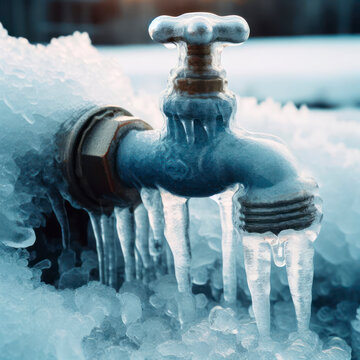Presented here down the page you might get additional excellent answers with regards to How To Avoid Freezing Pipes.

Winter can ruin your pipes, especially by freezing pipelines. Below's exactly how to avoid it from occurring and what to do if it does.
Introduction
As temperature levels drop, the danger of icy pipelines rises, potentially causing pricey repair services and water damages. Recognizing how to stop icy pipes is crucial for home owners in cool climates.
Avoidance Tips
Shielding vulnerable pipes
Cover pipes in insulation sleeves or utilize heat tape to secure them from freezing temperatures. Focus on pipelines in unheated or exterior locations of the home.
Heating methods
Maintain indoor spaces sufficiently warmed, especially areas with plumbing. Open up cabinet doors to enable cozy air to flow around pipes under sinks.
How to determine icy pipelines
Seek decreased water flow from faucets, unusual odors or noises from pipes, and visible frost on exposed pipelines.
Long-Term Solutions
Architectural modifications
Think about rerouting pipelines away from exterior wall surfaces or unheated locations. Add added insulation to attics, cellars, and crawl spaces.
Updating insulation
Invest in top notch insulation for pipelines, attics, and wall surfaces. Appropriate insulation aids preserve constant temperature levels and minimizes the risk of frozen pipelines.
Safeguarding Exterior Pipes
Garden pipes and exterior faucets
Separate and drain yard hoses before winter months. Install frost-proof faucets or cover exterior faucets with shielded caps.
Understanding Frozen Pipes
What creates pipelines to freeze?
Pipes ice up when revealed to temperatures below 32 ° F (0 ° C) for prolonged durations. As water inside the pipelines freezes, it broadens, putting pressure on the pipe walls and potentially triggering them to break.
Risks and problems
Icy pipelines can lead to water supply disruptions, property damages, and pricey fixings. Ruptured pipes can flood homes and cause extensive architectural damages.
Indications of Frozen Piping
Determining frozen pipes early can stop them from rupturing.
What to Do If Your Pipelines Freeze
Immediate actions to take
If you suspect icy pipes, maintain faucets open to relieve stress as the ice melts. Utilize a hairdryer or towels soaked in warm water to thaw pipelines slowly.
Final thought
Preventing icy pipelines needs positive actions and quick responses. By comprehending the reasons, signs, and safety nets, home owners can safeguard their plumbing during winter.
6 Proven Ways to Prevent Frozen Pipes and Protect Your Home
Disconnect and Drain Garden Hoses
Before winter arrives, start by disconnecting your garden hoses and draining any remaining water. Close the shut-off valves that supply outdoor hose bibs and leave the outdoor faucet open to allow any residual water to drain. For extra protection, consider using faucet covers throughout the colder months. It’s also important to drain water from any sprinkler supply lines following the manufacturer’s directions.
Insulate Exposed Pipes
Insulating your pipes is an effective way to prevent freezing. Pipe insulation is readily available at home improvement stores and is relatively inexpensive. Pay close attention to pipes in unheated areas such as the attic, basement, crawl spaces, or garage. Apply foam insulation generously to create a buffer against the cold. You can also wrap your pipes in heat tape or thermostat-controlled heat cables for added warmth.
Seal Air Leaks
Inspect your home for any cracks or openings that could let in cold air. Seal any holes around the piping in interior or exterior walls, as well as the sill plates where your home rests on its foundation. Additionally, make sure to keep your garage door closed unless you’re entering or exiting. Leaving it open creates a significant air leak that can lead to frozen pipes.
Allow Warm Air Circulation
During cold snaps, it’s essential to allow warm air to circulate evenly throughout your home. Leave interior doors ajar to promote better airflow. Open kitchen and bathroom cabinets to help distribute heat consistently around the rooms. If you have small children or pets, be sure to remove any household chemicals or potentially harmful cleaners from open cabinets for safety.
Let Faucets Drip
A small trickle of water can make a big difference in preventing ice formation inside your pipes. When temperatures drop significantly, start a drip of water from all faucets served by exposed pipes. This continuous flow helps prevent the water from freezing. Additionally, running a few faucets slightly can relieve pressure inside the pipes, reducing the chances of a rupture if the water inside does freeze.
https://choateshvac.com/6-proven-ways-to-prevent-frozen-pipes-and-protect-your-home/

As a devoted person who reads about How To Avoid Freezing Pipes, I think sharing that excerpt was smart. I beg you take the opportunity to distribute this write-up if you liked it. Thanks a lot for your time invested reading it.
Contact Us Today